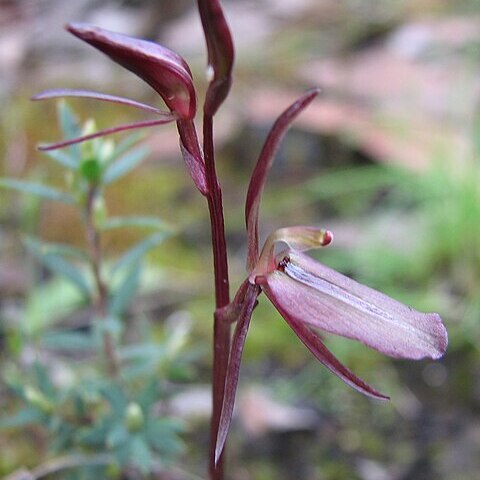A small orchid. It is an evergreen plant. It grows 5-20 cm high and a spread of 20 cm across. The stem is erect and carries the flower. The leaves are kidney shaped and 4 cm long by 5 cm across. They are green and with hairs on the underside. The flowers are reddish-brown. Up to 8 flower blooms can occur at the top of the plant. They are 1.5 cm long and pink or red. The lip of the orchid flower shows up clearly and is flat and oblong.

